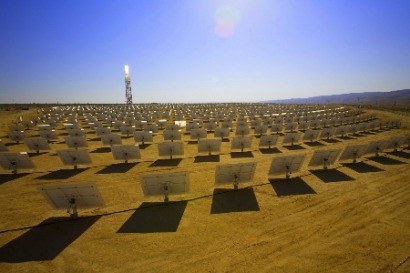
CSP Today’s South Africa two-part guide states: “The Integrated Resource Plan (IRP), published in mid-2010, identified South Africa’s 2013 renewables target of 10,000 GWh of energy from all renewable sources, of which CSP will initially contribute 1,000 MW.” However to drive the CSP industry in South Africa there is more than meets the eye – the localisation lynchpin.
In order to facilitate the IRP, the Department of Energy (DoE) and the National Energy Regulator of South Africa (Nersa), have for several years been working on the promulgation of the country’s renewable energy feed-in tariff (Refit) programme. The framework was completed last year with implementation expected this year.
Barbara Baker, one of the CSP Today’s report authors, explains that this progress was hindered, and “in March the energy regulator proposed a reduction in the tariffs announced earlier, including a 41% cut in the rate for CSP with six hours of storage”.
Following close on the heels of this development was the surprise announcement in June this year that Refit was to be shelved in favour of a competitive bidding process. Uncertainties surrounding the legalities of Refit appeared to be a fundamental reason for this change.
Baker comments: “This perceived lack of decisive policy on renewables, coupled with a lack of planning for satisfying increased demands for energy has, until recently, been damaging progress towards faster development of CSP in South Africa. Currently, producers and developers are all waiting on definitive government energy policy decisions”.
How does this compare with North Africa?
As in South Africa, countries in North Africa – Egypt, Libya, Algeria, Morocco and Tunisia – are also undergoing a learning curve that takes place in any new market. “A key question is how fast and efficiently these markets for CSP can adapt, develop and industrialise. If they are slow to respond to regulatory initiatives, the initial impetus will be lost,” Baker points out.
In these countries, too, there are concerns regarding the trends exhibited by some of the regulatory bodies.
A barrier that presents a greater challenge in North Africa than South Africa is that of stability. The political events in Egypt and Libya, for example, “have created concerns within the region and worldwide, and CSP development, as with so many other issues, may well suffer as a result”.
Supply chain development is still in its early stages. With regard to technology, for example “there is insufficient awareness, region-wide, of the opportunities for technology transfer and local production of these technologies”. This is exacerbated by the fact that CSP is percieved as expensive. Clearly the priority for development of the South African and North African Concentrated Solar Power (CSP) market is “a positive and stable political framework and environment,” as Baker succinctly puts it. Only once this is in place, can further challenges be confronted, dealt with and overcome.
The South African governments have been taking steps in the right direction, but as they give with one hand they are placing very difficult conditions with the other. US Assistant Secretary of Commerce Michael Camuñez, who recently lead a trade delegation to South Africa that included 14 American renewable energy firms, voiced some concern about the local content stipulations contained with the country’s recently released bidding documentation.
"The concern is that, while we share the commitment and the desire to create and stimulate local manufacturing, our experience globally is that mandates don’t work."
“The most innovative companies internationally do the R&D [research and development] and they source internationally and mandated local-content requirements can potentially have the effect of requiring innovative companies to use and deploy technology that may not be best in class, that may not be of the highest quality and that may, in the long run, drive up costs and run counter to the overall objectives of the alternative energy initiative,” Camuñez said in response to a question posed by Engineering News Online.
He argued that an incentive-based approach, such as offering tax credits, R&D support and other voluntary initiatives, would be more effective.
This issue forms a big part of the debate at the CSP Today South Africa 2012 Conference taking place 7-8 February in Johannesburg. Recent localisation studies and strategies will be presented by the University of Stellenbosch, Industrial Development Corporation, Ernst & Young, SASTELA and Protermosolar.
For additional information:

